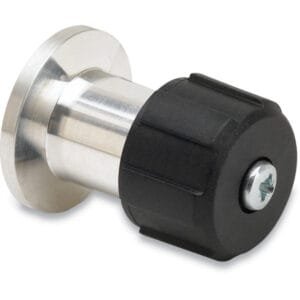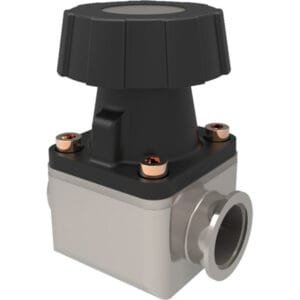Feedthrough Baseplate Coupling Connectors: Reliable Vacuum-Tight Tube Interfaces for 1″ Baseplate Ports
Feedthrough Baseplate Coupling Connectors from TFM are engineered to establish secure, vacuum-tight connections between external tubing and internal vacuum chamber volumes. Designed to fit standard 1″ baseplate ports, these feedthrough couplings accommodate vacuum walls with thicknesses ranging from 1/4″ to 1-1/4″, making them highly adaptable for use in research chambers, system builds, and modular upgrades.
Each connector is precisely machined from high-quality aluminum and includes an internal o-ring seal positioned on the vacuum side of the port, ensuring reliable performance at high or ultra-high vacuum levels. Depending on system design, users can choose between compression o-ring tube connections or female NPT-threaded interfaces for plumbing flexibility.
Key Features of Feedthrough Baseplate Coupling Connectors:
Baseplate-Compatible Design
Engineered to fit standard 1″ vacuum baseplate ports, allowing quick integration into existing or new vacuum systems.Wall Thickness Range: 1/4″ to 1-1/4″
Accommodates common vacuum chamber wall dimensions, supporting both compact and reinforced baseplates.Material Construction
Manufactured from aluminum for lightweight strength and vacuum compatibility. (Stainless steel available for coupling plugs only.)Dual Tube Connection Methods
– Compression O-Ring Fitting: For leak-tight sealing around smooth tubing.
– Female NPT Fitting: For threaded connections with process lines or adapters.Vacuum-Side O-Ring Sealing
O-ring is seated inside the chamber for optimal pressure resistance and minimal leak paths.Coupling Plug Compatibility
Can be easily blanked off using TFM’s Feedthrough Coupling Plugs, which are supplied with matching o-rings for secure sealing when not in active use.
Applications:
Connecting gas lines, cooling loops, or instrumentation tubing to vacuum chambers
Modular chamber access in research and industrial HV systems
Temporary or flexible process gas injection points
Vacuum manifold builds requiring NPT thread or smooth tube compatibility
Vacuum system expansion or maintenance access
TFM also offers matching Feedthrough Coupling Plugs, replacement o-rings, and adapter fittings, allowing engineers to configure robust, adaptable vacuum plumbing with long-term reliability.
In conclusion, Feedthrough Baseplate Coupling Connectors provide a clean, leak-tight, and flexible solution for interfacing external tubes with vacuum systems. Their precision-sealed design and versatile connection options make them indispensable in research, semiconductor, and custom vacuum engineering environments.





Reviews
There are no reviews yet.